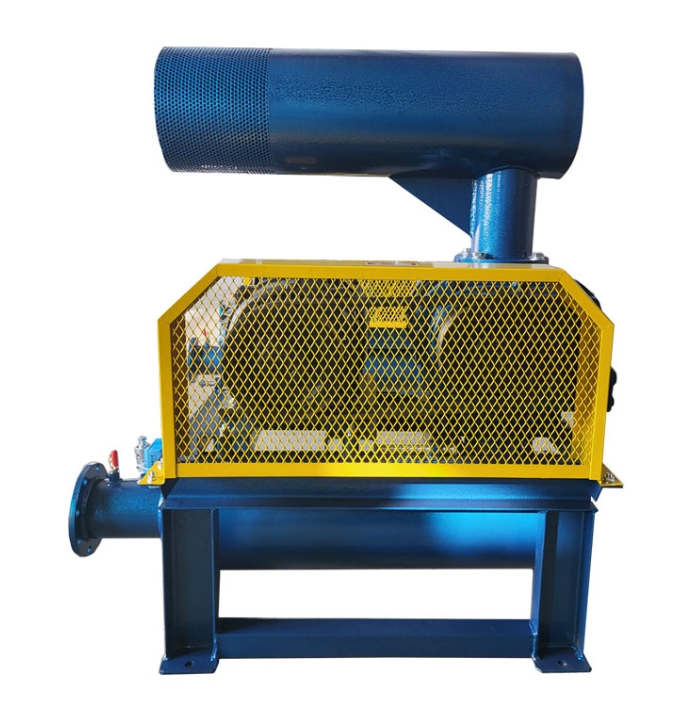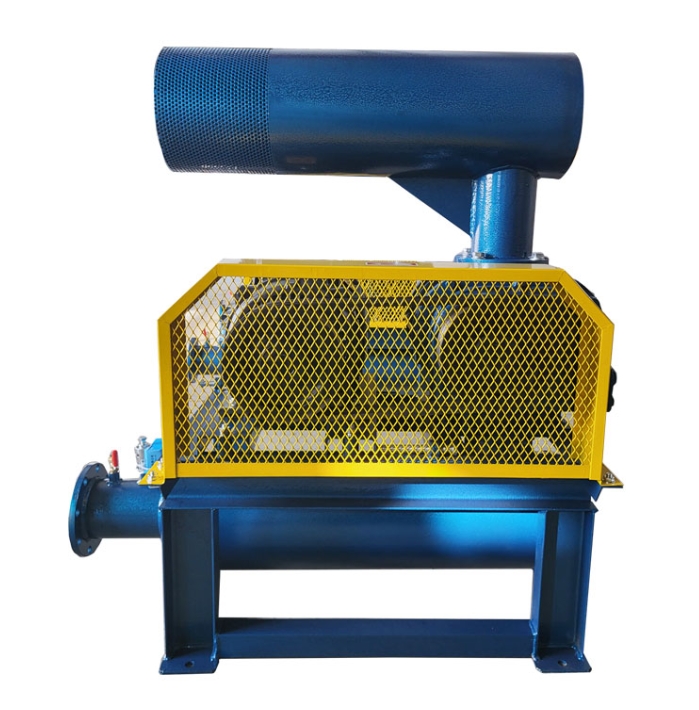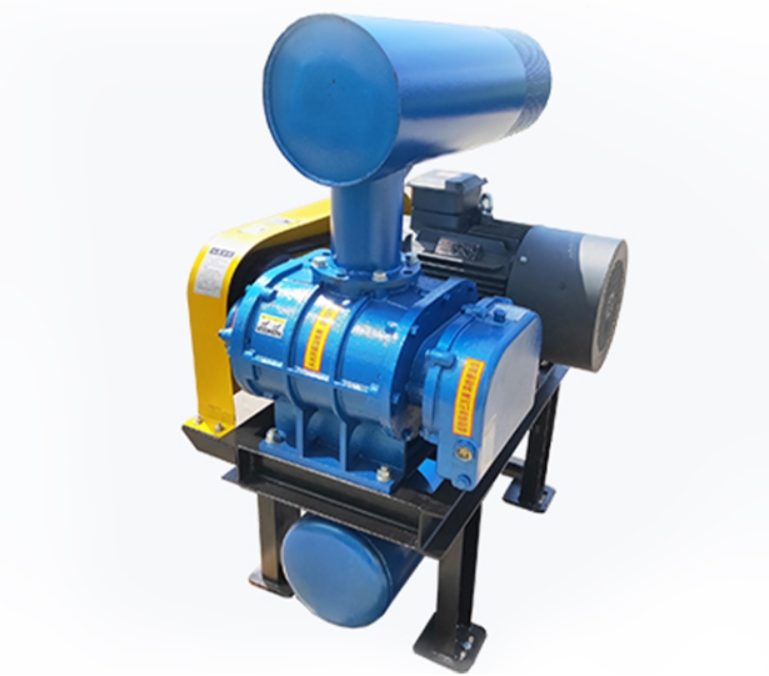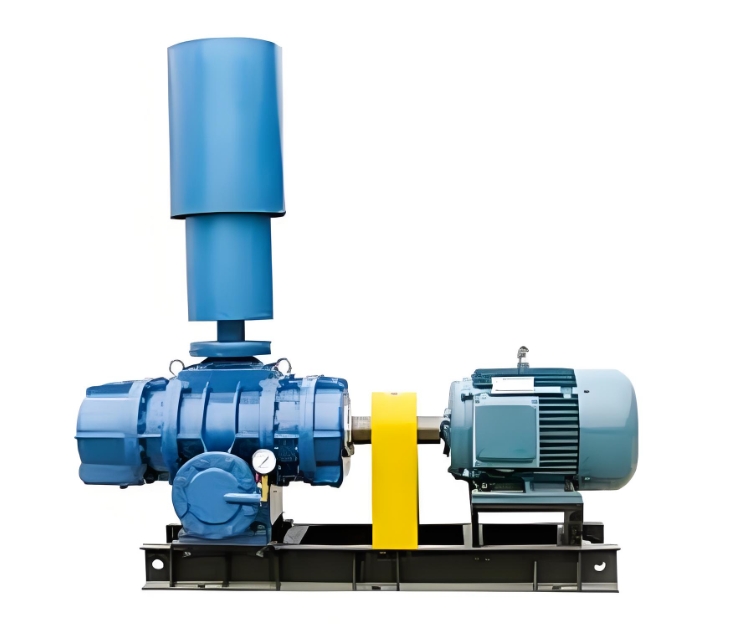What is the purpose of Roots blower

Roots blower is a type of positive displacement pump that primarily delivers gas through the rotation of a pair of interlocked rotors (impellers). Its core feature is that the air volume is directly proportional to the speed, and the pressure depends on the system resistance (but is limited by the strength of the fan structure). Here are its main uses and working principles:
---
**1、 The main purpose of Roots blower**
1. * * Sewage treatment**
-Aeration oxygen supply: Forcefully delivering air to the biochemical tank to promote microbial decomposition of organic matter (commonly used in municipal and industrial wastewater treatment).
-Mixing and stirring: prevent sludge sedimentation and maintain uniform reaction in the tank.
2. * * Pneumatic conveying**
-Transporting granular or powdery materials, such as cement, grains, plastic particles, coal powder, etc. (requiring coordination with pipeline systems).
-Suitable for low-pressure, short distance transportation scenarios (high-pressure long-distance requires air compressors).
3. * * Aquaculture**
-Add oxygen to fish ponds and shrimp ponds to increase the dissolved oxygen content in the water and prevent fish from lacking oxygen.
4. Industrial gas transportation**
-Transporting neutral or inert gases such as air, gas, biogas, carbon dioxide, etc. (corrosive gases require special material fans).
-Used for assisting combustion in furnaces, supplying air to drying equipment, etc.
5. * * Other applications**
-Vacuum packaging: Reverse suction creates a low vacuum environment.
-Printing Machinery: Paper Adsorption and Positioning.
-Electroplating tank stirring: enhances electrolyte flow.
---
**2、 Working principle**
1. * * Structural characteristics**
-There are two "8" - shaped or "three bladed" rotors inside the casing, which are maintained in mesh through synchronous gears (with no contact between the rotors).
-The gap between the rotor and the casing (about 0.1~0.4mm) forms a closed chamber.
2. * * Working process**
-* * Inhalation stage * *: When the rotor rotates, the volume on the inlet side increases, and gas is inhaled.
-Compression stage: The gas is pushed by the rotor to the outlet, where the volume decreases and the pressure increases (but there is no internal compression, and the pressure is determined by the system resistance).
-Exhaust stage: Gas is forcibly discharged into the pipeline.
3. * * Key Features**
-Fixed volume conveying: The air volume is determined by the rotational speed and is independent of pressure (suitable for scenarios that require stable flow).
-Low efficiency: Compared to centrifugal fans, it consumes more energy (especially at high pressure), but its advantage lies in stable flow rate.
---
**3、 Difference from other fans**
|* * Comparison item * * | * Roots blower * * | * * Centrifugal blower * * | * * Screw blower * *|
|------------------|----------------------------|----------------------------|----------------------------|
|* * Working principle * * | Volumetric (mechanical extrusion) | Kinetic energy (blade centrifugal force) | Volumetric (screw rotary compression)|
|* * Pressure range * * | Medium and low pressure (generally ≤ 0.1MPa) | Low pressure (≤ 20kPa) | Medium and high pressure (up to 0.4MPa or above)|
|* * Flow regulation * * | Requires variable frequency or bypass valve | Can be directly adjusted through valve | Variable frequency regulation|
|* * Efficiency * * | Lower (more pronounced under high pressure) | Higher (especially under high flow conditions) | Higher|
|* * Noise * * | Large (requires muffler) | Small | Small|
---
**4、 Selection precautions**
1. * * Parameter matching**
-Select the model based on the required air volume (m3/min) and pressure (kPa), with a reserved margin of 10-15.
-Corrosive gases should be selected from stainless steel or rubber lined materials.
2. * * Installation environment**
-Avoid high temperature and dusty environments, otherwise a cooler or dust cover needs to be installed.
3. Energy saving considerations**
-It is recommended to install a frequency converter for long-term operation to avoid valve throttling losses.
---
**5、 Common Misconceptions**
-Misconception 1: Roots blowers can generate high pressure like air compressors.
→ Actual: Its pressure is determined by the resistance of the backend system, and exceeding the rated value can cause motor overload or fan damage.
-Misconception 2: Lubricating oil directly contacts the transported gas.
→ Actual: Lubricating oil is only used for lubrication of gears and bearings (oil-free type). If oil is prohibited during gas transportation, special sealing design must be selected.
Roots blower is suitable for scenarios with stable flow and small pressure fluctuations. If high pressure or variable flow conditions are required, it is recommended to evaluate other types of blowers.





